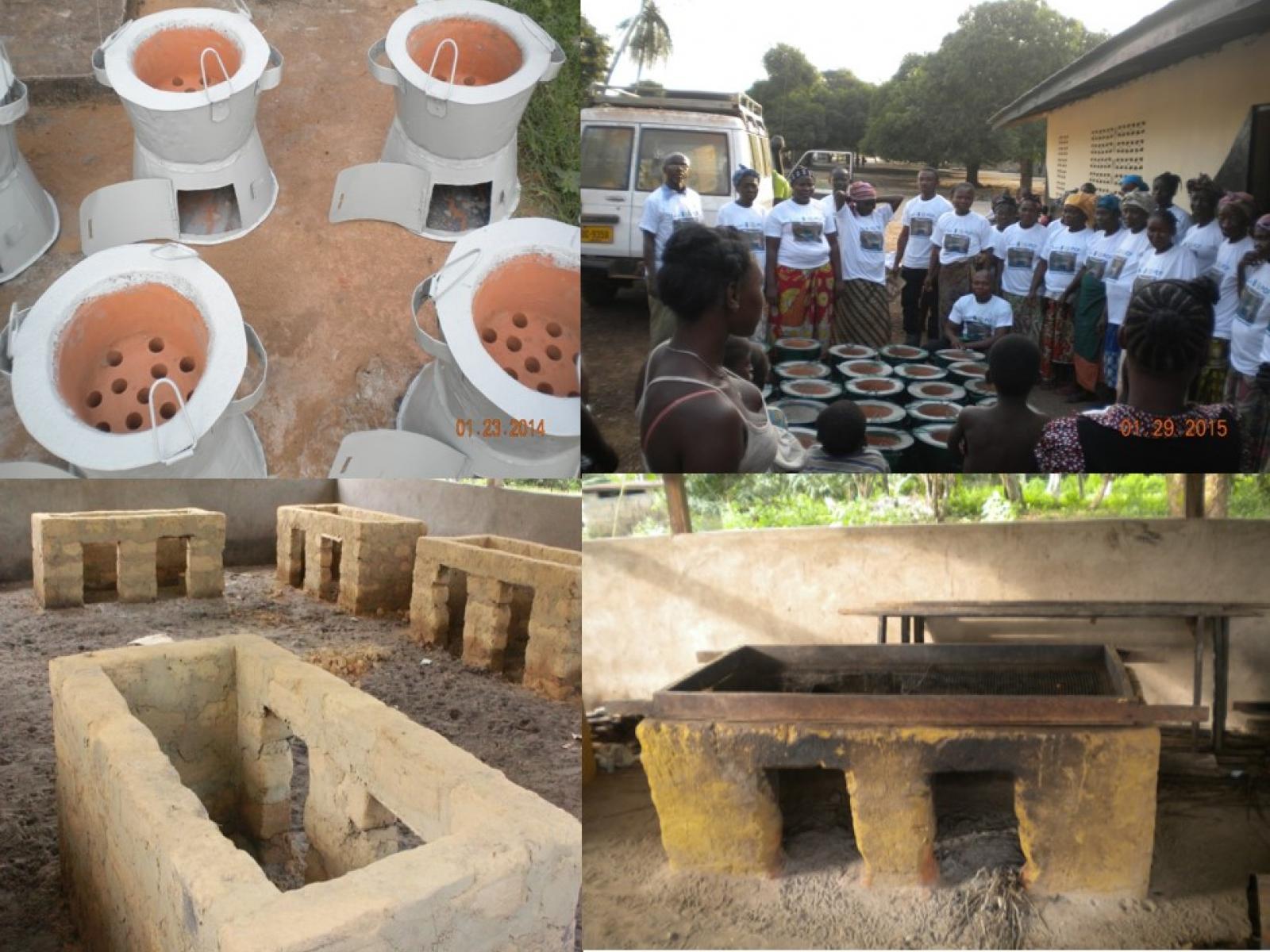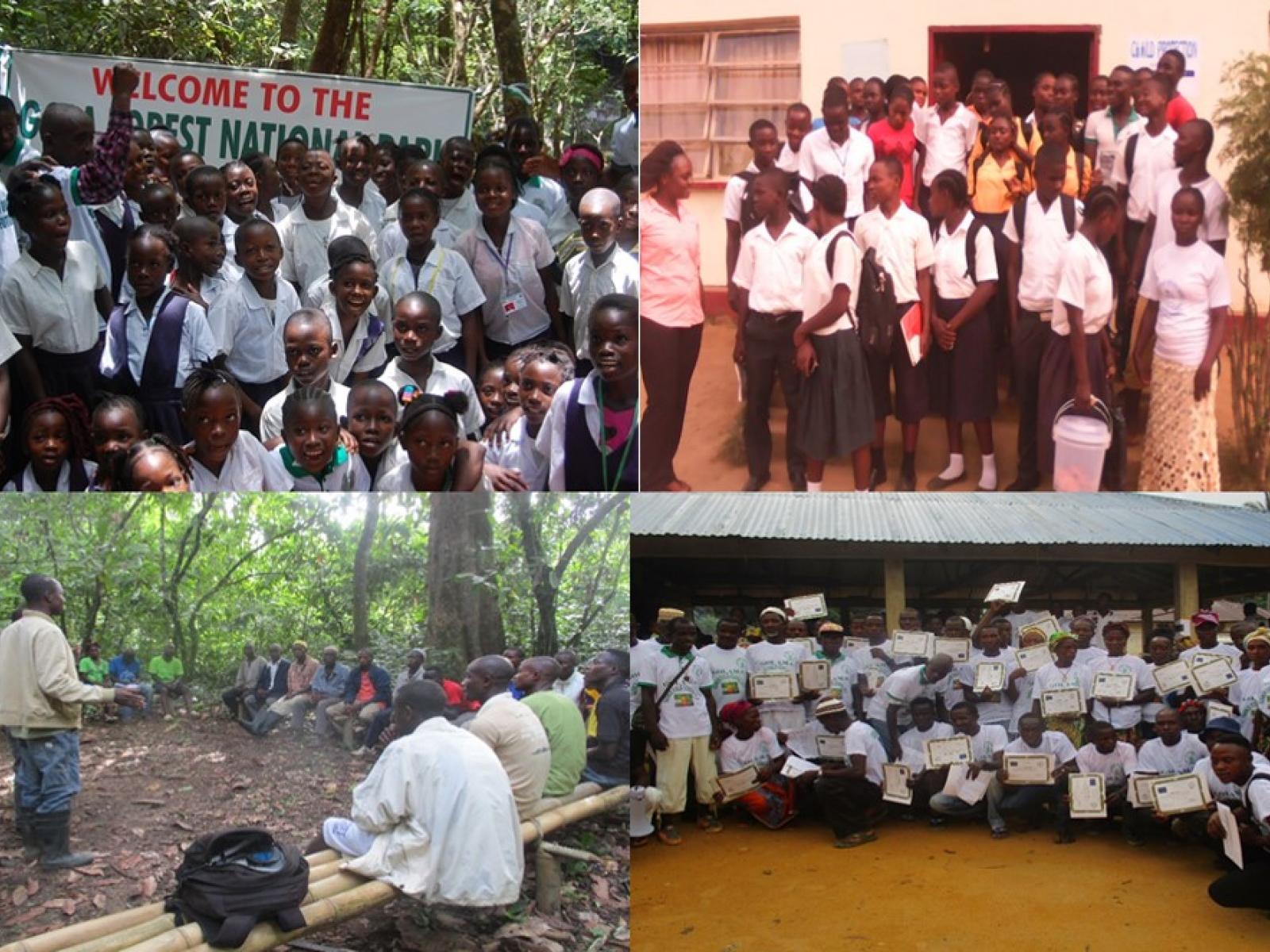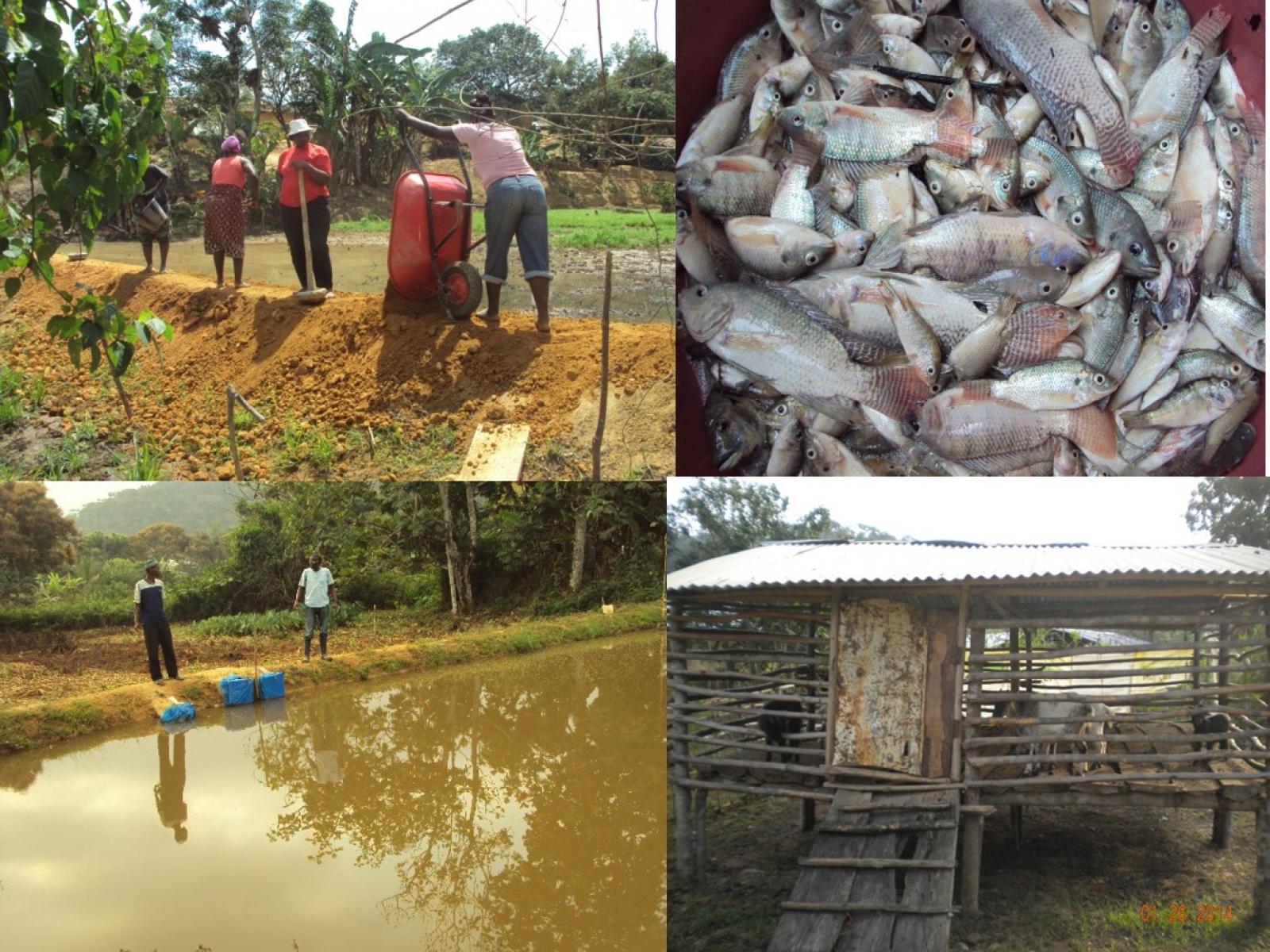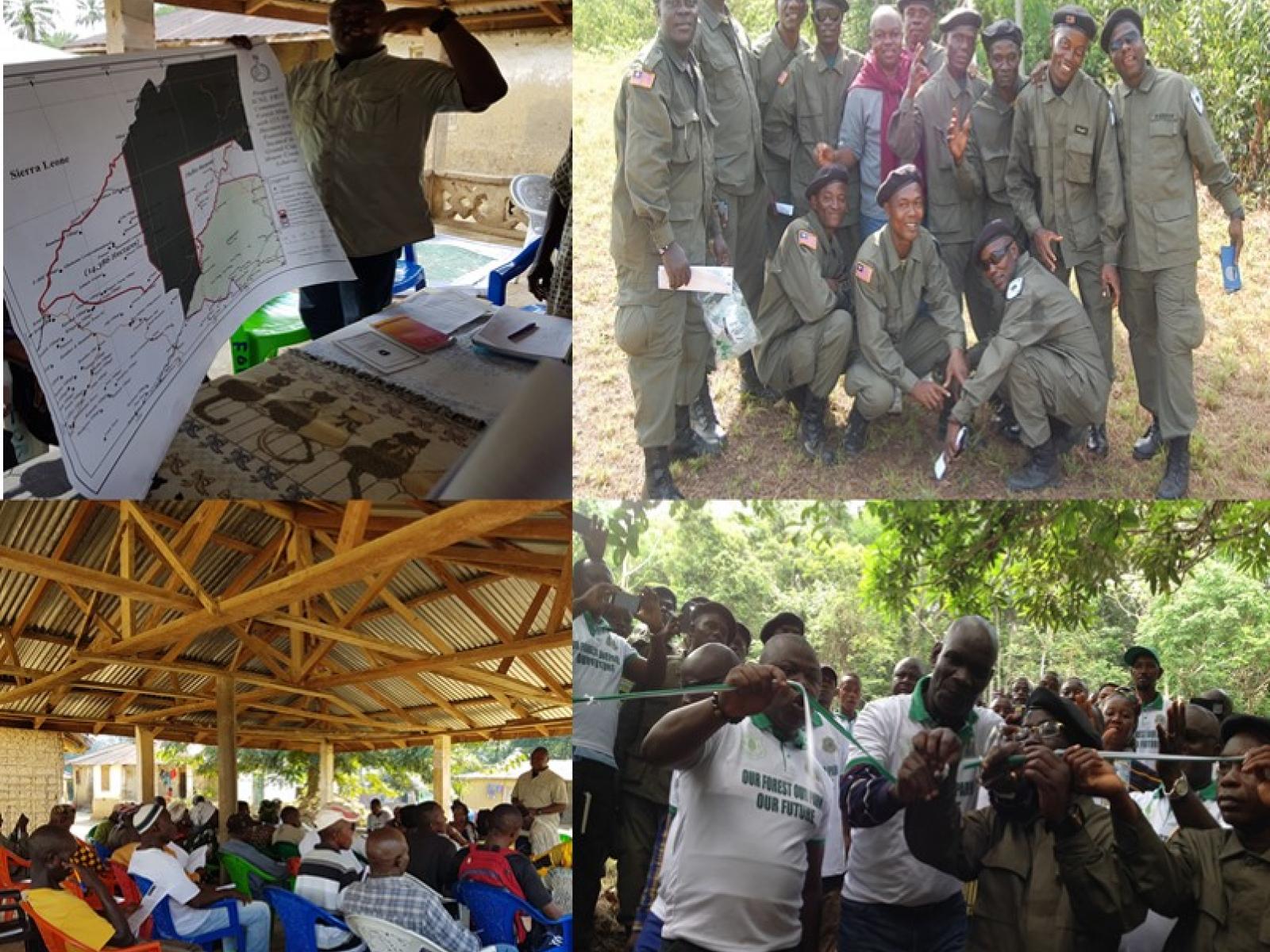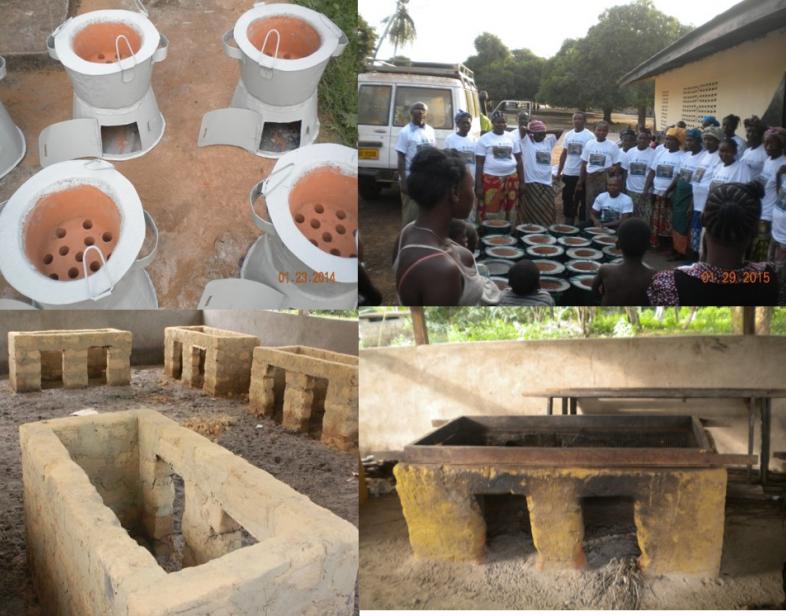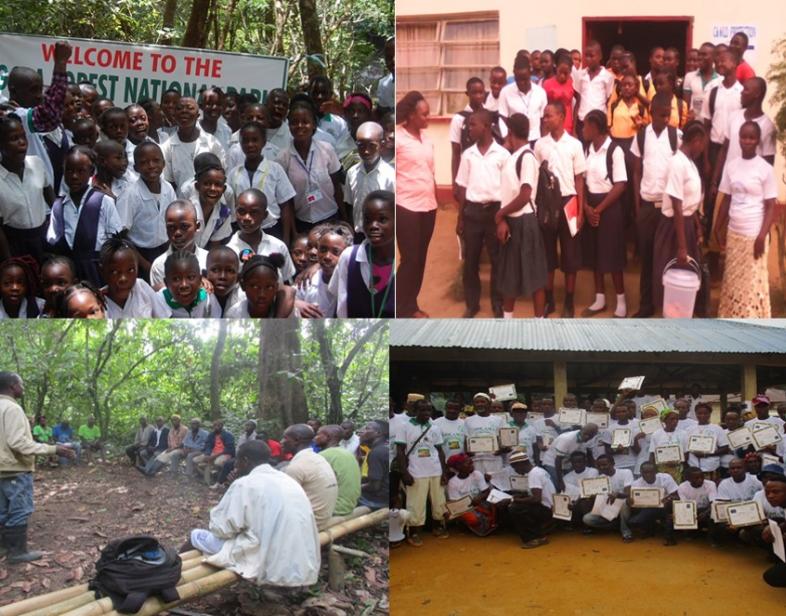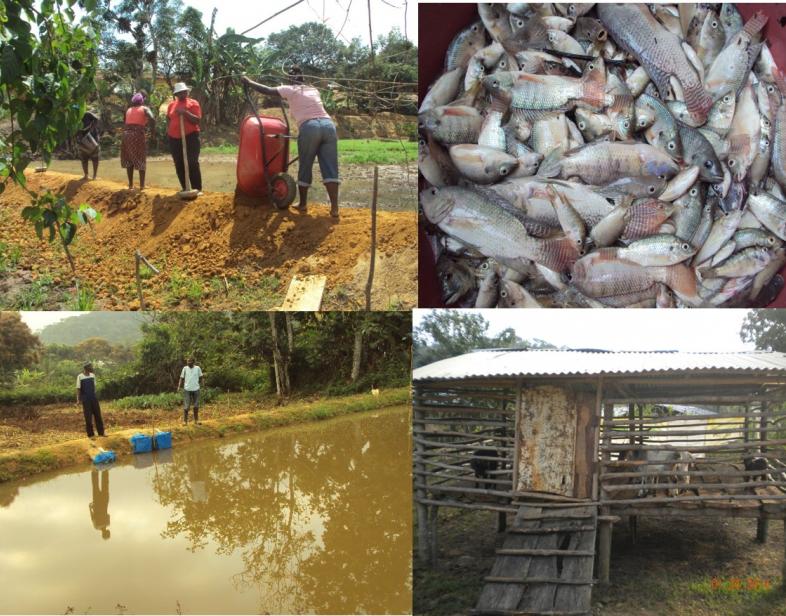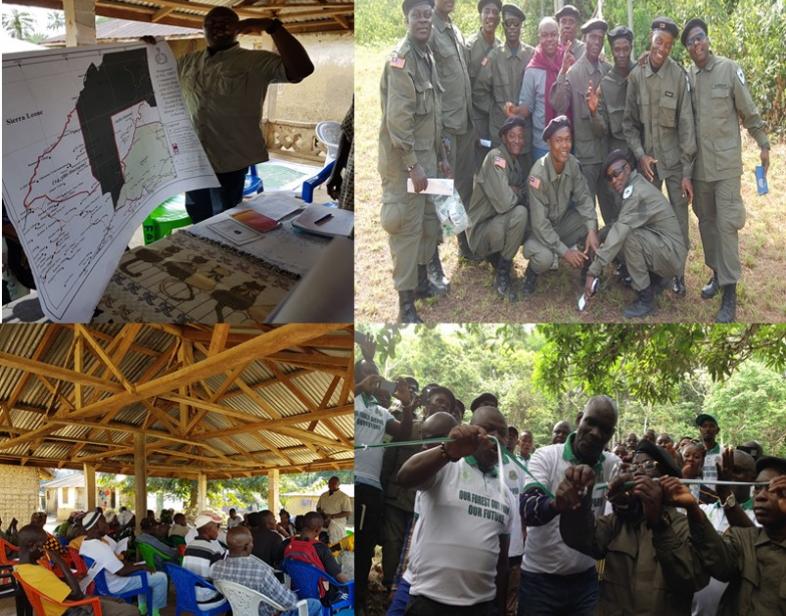An Overview Of Our Solution
Forests serve multiple benefits such as carbon sink and source of emissions in the context of climate change. Adverse anthropogenic activities are the most drivers of climate change. Therefore, understanding the social-ecological dimensions is essential to reducing greenhouse gas emissions. Liberia has the largest portion of the Upper Guinea Rainforest (Gola National Forest belt) that serves as hotspot of biodiversity, carbon sink, and potential source of carbon emissions. People have encroached on these forests and gradually destroying them due to 14 years of civil war in Liberia. Hence, Society for the Conservation of Nature of Liberia (SCNL), a local NGO has been working with local communities within and around these intact forests to foster sustainable behavior change for conservation purposes and climate change mitigation and adaptation.
- Population Impacted: 26,758
- Continent: Africa
Context Analysis
Tropical forests account for estimated 15 percent of global land surface (FAO, 2006) and with potential of sequestrating 25 percent of carbon (Bonan, 2008). Moreover, 90 percent of 1.2 billion people in developing countries depend on forests for their livelihoods, which is leading to deforestation and degradation every year that accounts for 20% of total greenhouse gas emissions (World Bank, 2004).
Liberia is no exception, with (42%) of the Upper Guinea Forests of West Africa, with the largest remaining portion, the Gola National Forests of 206,990 ha. These forests are of global biodiversity importance and source of carbon sink.
A joint assessment of SCNL and BirldLife International reveals the following threats to the forests such as unsustainable firewood harvesting, illegal logging and pit sawing, charcoal production, shifting cultivation. Moreover, local communities’ dependence on these forests for domestic energy and livelihoods is high.
Describe the technical solution you wanted the target audience to adopt
Some technical solutions were the establishment of a protected area (Gola Forest National Park of 88,000 ha.) started in 2009-2016, and promoting the practice of climate-smart agriculture among farmers. Also, vocational and skill training of some community members and provision of alternative livelihoods opportunities such as non-farm jobs, establishment of local businesses of basic commodities. Moreover, the adoption of Eco-Stoves hence reducing the high consumption of firewood. Importantly, promoting group or individual certification for the production of sustainable timbers/wood. To end with, the establishment of nature club for children and adults, establishment of Site-Support Group, and integration of climate change and conservation awareness and education in school curricula in compliance with the United Nations Alliance of Climate Change: Education, training and public awareness under the UNFCCC.
Type of intervention
Describe your behavioral intervention
SCNL conceptualized its behavioral intervention strategies based on the Community-Based Social Marketing framework (CBSM), which has proven to be more pragmatic and effective in sustainable behavioral change, unlike interventions that depend exclusively on print media or informational advertisement (McKenzie‐Mohr, 2011).
The first behavior selected to change was the negative perception of local people about the establishment of a Protected Area, that PA establishment may acquire large hectares of land affecting their livelihoods. This mentality influenced resistance to conservation of natural resources. Second, the high dependence on forest resources for livelihoods such as slash and burn cultivation, energy production, and unsustainable harvesting of timers resources and non-timber forest products. Most of these behavioral activities contribute to huge carbon emission and contradict SDGs 13-Climate Action and 15-Life on Land.
SCNL ensures working directly with children, youth, adults, women, vulnerable and marginalized people at the community level and the use of traditional knowledge. Furthermore, through desktop research, survey, and focus group discussions, we identified barriers to behavioral change as well as benefits (motivating factors). Thirteen communities voluntarily signed conservation agreement. Importantly, SCNL employed adaptive management approach to monitor and evaluate interventions to inform management decisions and improve conservation practices.
As needed, please explain the type of intervention in more detail
To motivate people to act positively, SCNL has planned a proposed conservation contest (Best Conservation Community and Farmers, 2021) This award winning ceremony shall base on output and outcome indicators of how communities are using, managing forest resources, farming, and behavior change. The contest seeks to promote the adoption of best practices among communities and farmers.
In addition, SCNL incentivizes sustainable positive behavior for adoption of improved cooking stoves and the use of solar energy. SCNL also propagates love and action messages such as “Our forest and park of hope and future.” These messages are awe and positive than apathy that appeal to the emotions of children, youth, and adults to protect nature.
Describe your implementation
SCNL identified and consulted all stakeholders particularly local forest communities according to the guidelines on Free, Prior and Informed Consent (FPIC). The recognition of indigenous people’s rights, involvement, and ownership of project results in positive behaviors for project implementation and sustainability.
The project team conducted awareness of the importance of natural resources. Moreover, how all stakeholders can conserve and use sustainably in compliance with the Strategic Plan for Biodiversity 2011-2020 and the Aichi Targets 1(CBD, 2016).
More to that, SCNL introduced Eco-cooking stoves to improve energy efficiency. Also, growing trees on the edge of farms and using residues from harvested timbers and sawmills are positive interventions. As a result, 125 households have adopted these interventions in Cape Mount and Grand Bassa Counties.
SCNL has proposed to introduce improved charcoal production kiln that uses small quantity of wood to produce large amount of charcoal, unlike the traditional earth mound kiln. Likewise, SCNL is establishing Acacia farnesiana and Acacia nilotica woodlots to supply wood for charcoal making.
SCNL has introduced Integrated farming system and animal husbandry. Beneficially, farmers use animal manures for fertilization and mulching for water conservation and improve soil quality.
On the other hand, SCNL provides alternative livelihood opportunities such as micro-loan for conservation-friendly businesses, apiculture, and farmer field school. Besides, SCNL collaborates with partners to ensure sustainable production of timbers and law enforcement in compliance with the Convention on International Trade in Endangered Species of Wild Fauna and Flora (CITES). The demarcation of the Park sparked violence but was resolved through stakeholder consultation.
To conclude, Core to SCNL is working with children and youth through site visit to the forest, parks, nature club and tree-planting activities.
External connections
The key stakeholders are local forest communities, indigenous peoples, local governance body, school administers, Forestry Development Authority (FDA) of Liberia, Society for the Conservation of Nature of Liberia (SCNL), Civil Society Organizations, Royal Society for the Protection of Birds (RSPB), BirldLife International and Aage V. Jensen Charity Foundation. Forest communities, indigenous peoples and school administers are key decision-makers to warrant interventions align with traditional practices and community needs. Aage V. Jensen Charity Foundation is the chief financier with Rain Forest Trust also providing funding for the establishment of Gola National Park in Liberia and supports local community development initiatives for sustainable management and use of forest resources. On the other hand, the Forestry Development Authority serves as custodian of Liberian forests and ensures all forestry projects support national forestry policies. Besides, SCNL serves as main implementer in nature conservation and the establishment of protected network. As well, ensuring good governance of natural resource, building capacities at the local, national and regional levels and promoting participatory decision-making and conflict management in conservation. Similarly, Birdlife International manages the project along with the Royal Society for the Protection of Birds (RSPB) to ensure project interventions comply with international policies and frameworks.
Who adopted the desired behaviors and to what degree?
A milestone was the acceptance by local communities for the establishment of the Gola Forest National Park of 88,000 hectares from 2009 to 2016.
There has also been widespread adoption of the Eco-cooking stoves by two hundred households. Currently, nine farmers are practicing integrated farming system.
The improved charcoal production kiln has not yet been introduced; however, through awareness and training of 84 charcoal makers, evaluation results based on willingness to use this method shows that 68 (80.95%) of respondents agreed to use the equipment.
Community members aiding in surveillance, law enforcement, and as whistleblowers have helped to slow illegal logging activities and influenced loggers to adopt more sustainable approach to logging. As well, there have been establishment of three community forests for sustainable management and use. Namely, Tonglay and Norman community forest of 40,000 ha and Sokpo clan of 20,000 ha.
How did you impact natural resource use and greenhouse gas emissions?
These interventions affect natural resources by lowering deforestation, reduced human pressure on forest resources for livelihoods thereby improving the conservation of natural resources, biodiversity, and carbon sequestration. However, SCNL is yet to evaluate these interventions to provide quantitative results. Despite, protected areas stores an estimated 15.2% global carbon stock with potential for climate regulation (Campbell et al., 2008). At present, there has not been carbon inventory and calculation of storage within Gola Forest National Park and surrounding forests because the Park is in its two years of establishment. Nonetheless, a proposed REED+ project seeks to sell carbon credits using the Verified Carbon Standards (VCS) and the Climate, Community, and Biodiversity Alliance (CCBA), to aid with provision of sustainable finance. SCNL shall use VM0007 methodology modules BL-UP to quantify GHG emission reductions and removals to trade on the Voluntary Carbon Market.
What were some of the resulting co-benefits?
Fourteen farmers have benefitted from capacity building through farmer field school to increase crop productivity on fallow land and project benefitted reduction in forest conversion. Furthermore, 190 women in Cape Mount and Gbarpolu counties have benefited from financial assistance (Micro-loan support for women) and small business training enabling women to be financially independent thereby reducing reliance on forest resources for income. In addition, community members are benefiting from improved energy efficient cooking stoves and support to a group of twenty-fishpond team, Aqua Culture Support (Fish Pond Management) as alternative source of protein helping to reduce bushmeat hunting and trade of protected species. Moreover, there has been improvement in forest governance resulting in participatory decision making in so doing has improved sustainability of project.
Sustainability
Grant funding supports the establishment of the National Park, capacity building of stakeholders through training, provision of alternative livelihood activities, and law enforcement. Such a large-scale project is capital intensive and therefore requires donor supports but its sustainability should not rely on grant funding. Nevertheless, the sales of carbon credit should provide a source of income. In addition, SCNL has established three community enterprises that are operating within the community forests for the production of sustainable wood products. Beyond, SCNL collaborates through public-private partnership for the economic sustainability of the project.
Return on investment
The project cost is USD 300,000. However, the concept of ROI in conservation is new (Murdoch et al., 2007) but scientists have devised some procedures for calculating ROI in conservation (Possingham et al., 2001). ROI is simply calculated by conservation benefit multiplies by probability of success and divides by cost. Unfortunately, the collection of the right data, biodiversity and ecosystem services valuation in monetary terms pose major challenges to estimate ROI. Using the formula above, some benefits are primary production, biodiversity protection, timber, medicinal plants, climatic regulation and carbon sink, recreation and tourism, spiritual and religious well-being as well as alternative livelihoods income generating activities.
How could we successfully replicate this solution elsewhere?
Replicability is most successful when implemented in similar regions adapting the interventions to the culture and traditions of the people. Currently, the Forestry Division of Sierra Leone, the Conservation Society of Sierra Leona (Birdlife in Sierra Leona) and the Royal Society for the Protection of Birds (RSPB) are replicating these interventions in the transboundary Gola Rainforest National Park connecting Sierra Leona to Liberia. Darwin Initiative provided £133,900 for project implementation. Similarly, AMBERO Consulting Gesellschaft mbH, GIZ, Forestry Development Authority of Liberia and the government of Côte d’Ivoire are implementing similar interventions in the transboundary Taï-Grebo-Sapo Forest complex connecting Côte D'Ivoire to Liberia, with an operational budget of Euro 6,300,000 runs from 2015-2020. Lastly, there is great potential of broadly applying these interventions in West, Central, and South Africa through an adaptive management approach.

